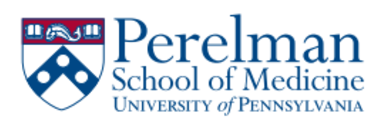Mohsin Shah
Chemoimmunotherapy Versus Immunotherapy for First Line Treatment of Advanced Non-small Cell Lung Cancer with a PD-L1 Score of 50-100%

Presenter
Flash Talk Presenter
Self-driven, clinical pharmacoepidemiologist, who aspires to become an expert in a) evaluating novel cancer interventions using real-world data and state-of-the-art biostatistical methods (b) generating real-world evidence from such novel cancer interventions, and (c) optimizing pharmacoepidemiology research methods to adapt to patients with cancer.
Abstract
Introduction: Anti-PD-(L)1 immunotherapy with or without chemotherapy has shown superior overall survival as a first-line treatment for patients with advanced non-small-cell lung cancer (aNSCLC) and high tumor expression of PD-(L)1 (PD-L1 score ≥50%) compared to chemotherapy alone. However, evidence on the cross-comparative effectiveness of chemoimmunotherapy versus immunotherapy alone in patients with PD-L1 ≥50% and in those with PD-L1 ≥90% is limited due to lack of head-to-head efficacy trials making it difficult to decide who can be spared the additional side effects associated with combination therapy. We sought to compare survival in aNSCLC patients with PD-L1 score ≥50% receiving first-line pembrolizumab with or without chemotherapy.
Methods: Cohort study of aNSCLC patients with PD-L1 score ≥50% who initiated first-line treatment with pembrolizumab monotherapy or in combination with carboplatin-based chemotherapy between Oct 24th, 2016, and Oct 29th, 2021, using the nationwide Flatiron Health electronic health record (EHR)-derived de-identified database. Kaplan-Meier curves and Cox regression were used to estimate 6- and 12-month overall survival and hazard ratios, respectively, for all patients with PD-L1 score ≥50% and in the subgroup of patients with PD-L1 score ≥90%. Multiple imputation was used to impute missing covariates. Propensity score-based inverse probability of treatment weighting (IPW) was used to address confounding by age, race, sex, smoking history, PD-L1 score ≥90%, tumor histology, presence of KRAS/BRAF mutation, practice type, and ECOG performance status. Because of non-proportionality of hazards, we estimated hazard ratios over the first 6 months and after 6 months for the overall cohort, and over the first 12 months and after 12 months for a subgroup of persons with a PD-L1 score of ≥90%.
Results: The cohort included 3086 aNSCLC patients. 52% of whom were male, median age at therapy initiation was 71 years, 27% had a KRAS mutation and 93% had a history of smoking. Sixty-eight percent received pembrolizumab as monotherapy. PD-L1 score ≥90% was split evenly between the treatment groups (n=946 (45%) in immunotherapy alone group vs n=426 (43%) in the chemoimmunotherapy group). IPW adjusted survival was higher for chemoimmunotherapy compared to immunotherapy alone at 6 months (74% vs 68%). Similarly, chemoimmunotherapy was associated with lower mortality compared to immunotherapy alone in the first 6 months after therapy initiation [IPW-adjusted Hazard Ratio (aHR) 0.74, 95% CI 0.61-0.90]. In the subgroup of patients with a PD-L1 score ≥90%, chemoimmunotherapy was associated with no overall survival advantage during the entire follow-up period (aHR 0.99, 95% CI 0.87-1.22), but was associated with a survival benefit during the first 12 months compared to immunotherapy alone (12-month survival 62% vs 57%; aHR 0.74, 95% CI 0.57-0.97).
Conclusions: Chemoimmunotherapy was associated with no overall survival advantage over immunotherapy alone, although was associated with a survival benefit in the first 6 months. Among PD-L1 score ≥90% (subgroup), chemoimmunotherapy was not associated with an overall survival benefit, but associated with a survival benefit in the first 12 months. Providers should carefully weigh the short-term benefits of chemoimmunotherapy over immunotherapy versus their long-term equivalence.
Keywords
cancer pharmacoepidemiology, applied methods, real-world oncologyAbout Us
To understand health and disease today, we need new thinking and novel science —the kind we create when multiple disciplines work together from the ground up. That is why this department has put forward a bold vision in population-health science: a single academic home for biostatistics, epidemiology and informatics.
© 2023 Trustees of the University of Pennsylvania. All rights reserved.. | Disclaimer

